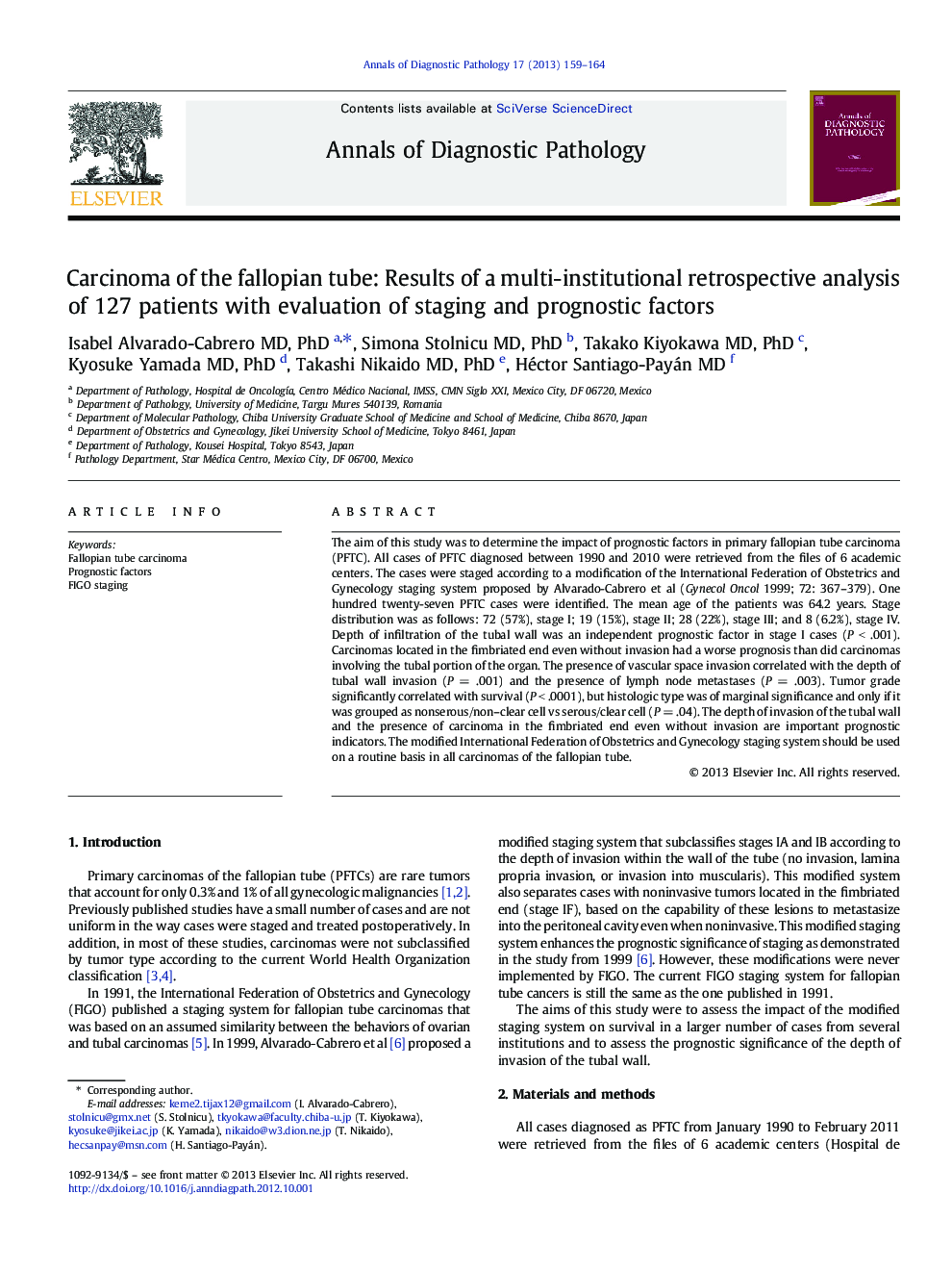| Article ID | Journal | Published Year | Pages | File Type |
|---|---|---|---|---|
| 4130301 | Annals of Diagnostic Pathology | 2013 | 6 Pages |
The aim of this study was to determine the impact of prognostic factors in primary fallopian tube carcinoma (PFTC). All cases of PFTC diagnosed between 1990 and 2010 were retrieved from the files of 6 academic centers. The cases were staged according to a modification of the International Federation of Obstetrics and Gynecology staging system proposed by Alvarado-Cabrero et al (Gynecol Oncol 1999; 72: 367–379). One hundred twenty-seven PFTC cases were identified. The mean age of the patients was 64.2 years. Stage distribution was as follows: 72 (57%), stage I; 19 (15%), stage II; 28 (22%), stage III; and 8 (6.2%), stage IV. Depth of infiltration of the tubal wall was an independent prognostic factor in stage I cases (P < .001). Carcinomas located in the fimbriated end even without invasion had a worse prognosis than did carcinomas involving the tubal portion of the organ. The presence of vascular space invasion correlated with the depth of tubal wall invasion (P = .001) and the presence of lymph node metastases (P = .003). Tumor grade significantly correlated with survival (P < .0001), but histologic type was of marginal significance and only if it was grouped as nonserous/non–clear cell vs serous/clear cell (P = .04). The depth of invasion of the tubal wall and the presence of carcinoma in the fimbriated end even without invasion are important prognostic indicators. The modified International Federation of Obstetrics and Gynecology staging system should be used on a routine basis in all carcinomas of the fallopian tube.
